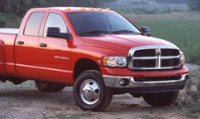Wheel spacer help
#11
Wheel Spacers are dangerous if you don't do it right... and even when you do they can be dangerous still... and it puts excessive stress on your wheel bearings, so be ready for some repairs in the near future.
You will need extended Wheel Studs in order to make this safe.
Personally I'd do the math and get new wheels that have a different offset than stock, and then put a wider tire on.
Either way you will stress out those wheel bearings.
Fender Flares are meant to keep the dirt that the tires kick up when turning inside the wheel wells and keep your paint in good shape... so be ready for some scratches when you kick up some rocks and road debris from time to time.
You will need extended Wheel Studs in order to make this safe.
Personally I'd do the math and get new wheels that have a different offset than stock, and then put a wider tire on.
Either way you will stress out those wheel bearings.
Fender Flares are meant to keep the dirt that the tires kick up when turning inside the wheel wells and keep your paint in good shape... so be ready for some scratches when you kick up some rocks and road debris from time to time.
#12
I will simplify it a little bit, the sum of the moments about a point like the bearing center is not zero. Instead it is equal to the moment of inertia multiplied by the angular acceleration.
So the total load on the bearing in a dynamic situation (when moving) will almost always be larger than the static load, and thus the increased moment arm can make this total load even larger. Also the larger normal force can affect the tire contact patch.
You can also change the steady-state camber angle with wheel spacers.
Another thing to consider is the resultant change in the "scrub radius", which is the area where the projection of the steering axis intersects the ground relative to the center of the contact patch of the tire. (laterally)
This suspension characteristic will affect how the vehicle handles if god forbid you get a blowout. The way OEM manufacturers design vehicle suspensions for US applications they make the vehicle "pull" to the right/left or stay centered depending on what happens. This is a safety feature that they are required to incorporate into the OEM design for mass production. (I'm not going to find the design standard they use, as I don't have time).
This design characteristic is the reason that sticking with the OEM offset is so important.
The other "danger" is that of inferior metal(s) being used to construct wheel spacers, you should not install anything that is weaker than 6061-T6 Aluminum, and the studs should meet or exceed shear strength of the OEM wheel studs.
That is why they are "dangerous", I know there are people out there that have run them without a problem for x number of years, and that is great for them.
I'm not going to stop you from buying and installing them, I'm just saying that there are risks associated with them, that is all.




